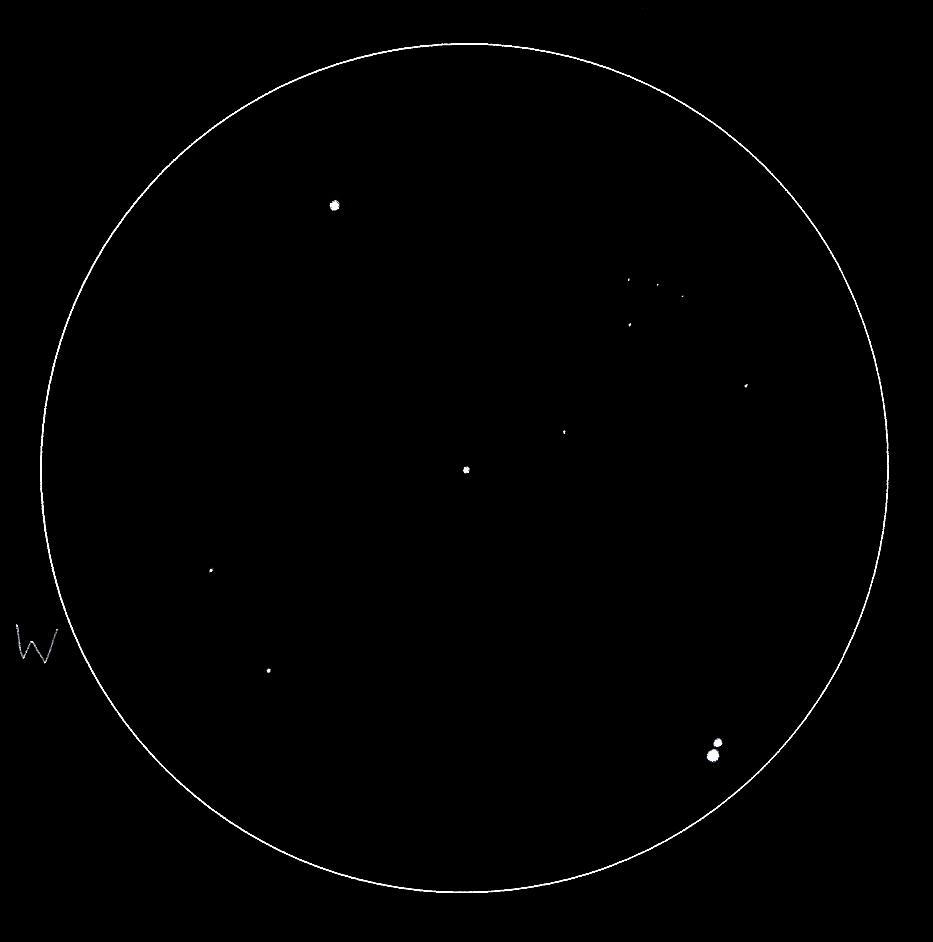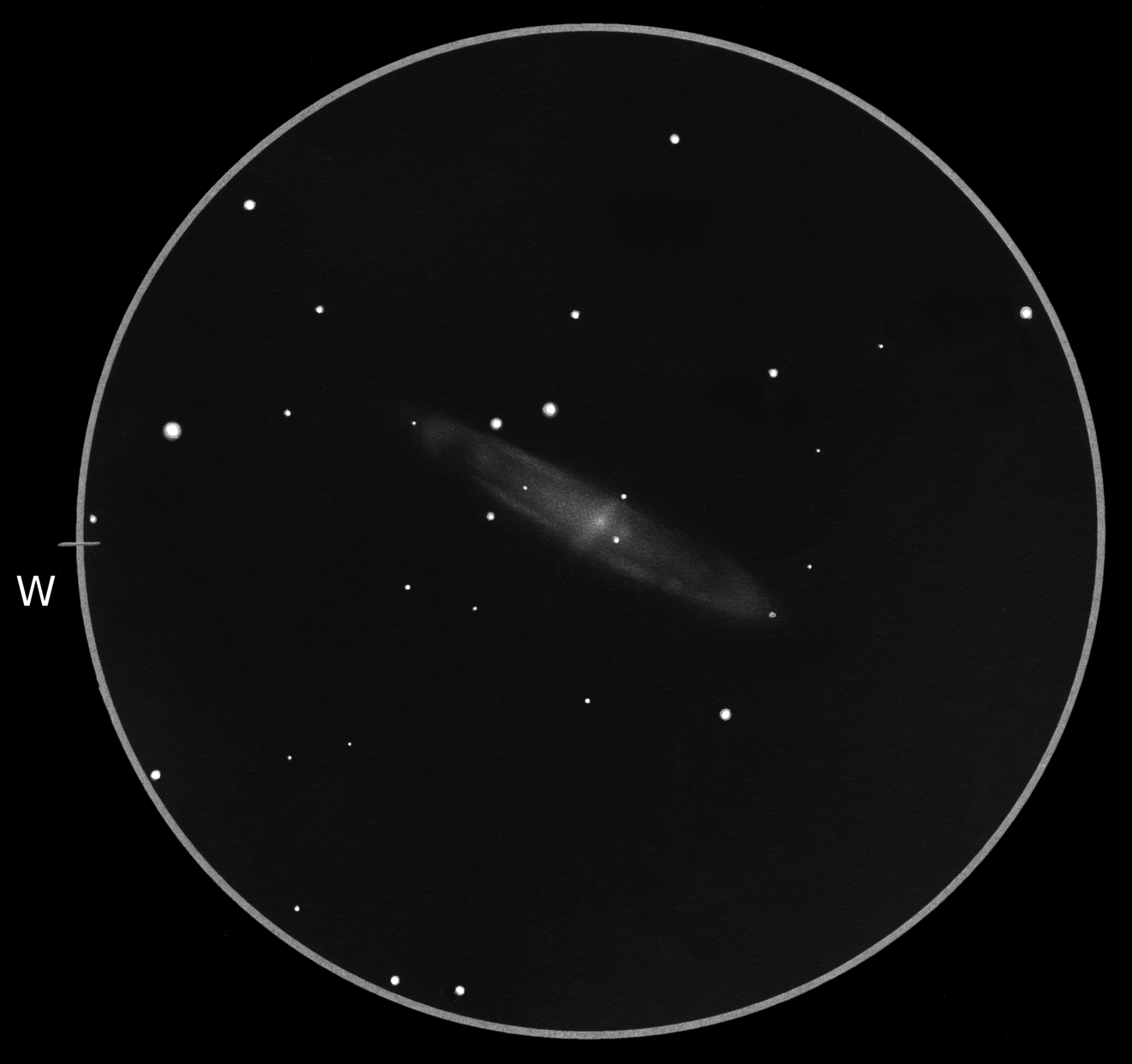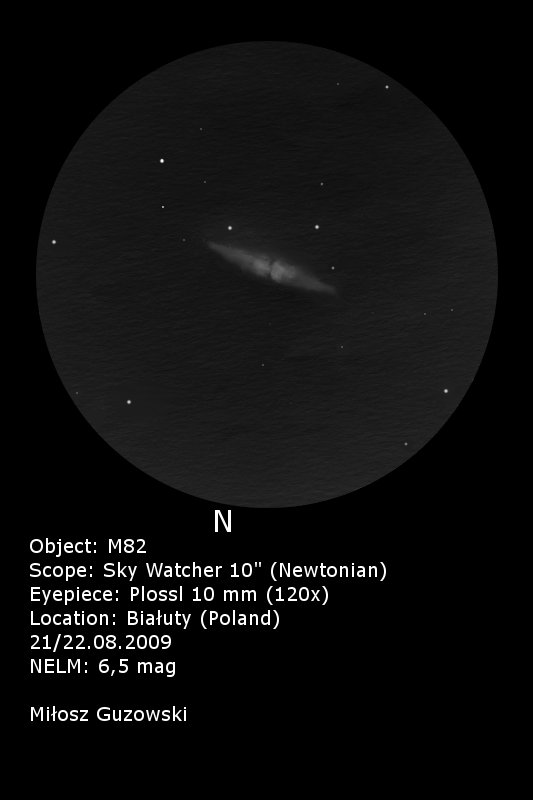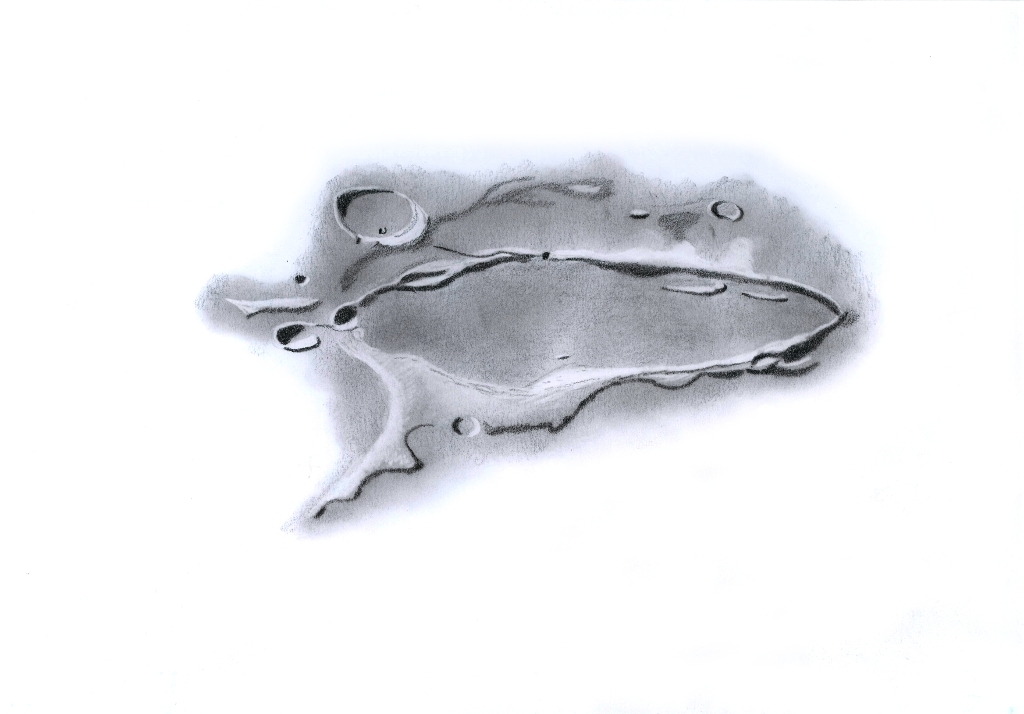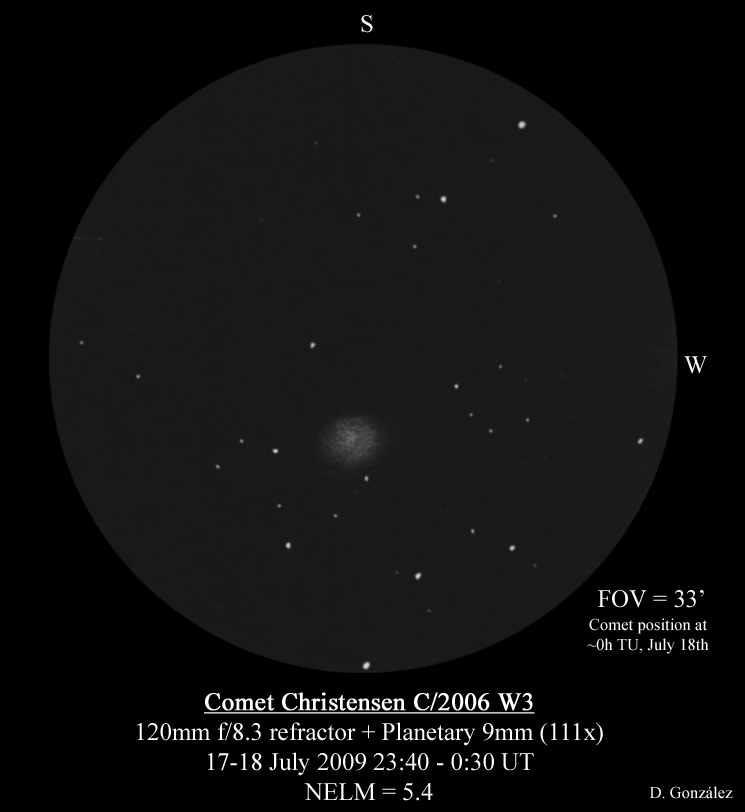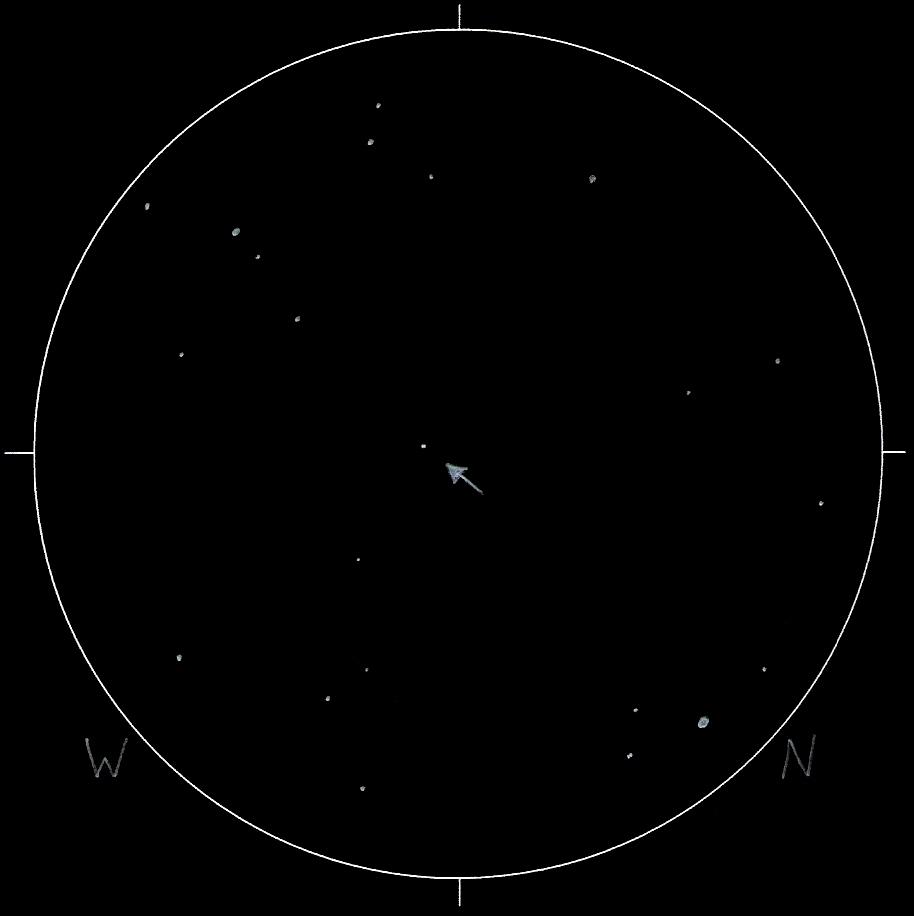
Nova Eridani 2009
Sketch and Details by Jef De Wit
Nova Eridani 2009
A nova is a cataclysmic nuclear explosion caused by the accretion of hydrogen onto the surface of a white dwarf star. Novae are not to be confused with supernovae or luminous red novae.
Astronomers estimate that the Milky Way experiences roughly 30 to 60 novae per year, with a likely rate of about 40. The number of novae discovered in the Milky Way each year is much lower, about 10.
An 8th-magnitude nova was discovered on November 25, 2009, by Koichi Itagaki of Yamagata, Japan. The new star lies in northeastern Eridanus, 6.9° west-southwest of Rigel. Prediscovery images suggests the star became as bright magnitude 5.6 in mid-November. Unfortunately, nobody noticed it then.
I had no trouble in finding the nova by using a finder chart from the American Association of Variable Star Observers. This chart contains comparison stars for magnitude determinations. My guess is a magnitude of 9.4.
Clear skies
Jef De Wit
Sources: www.wikipedia.org and www.skyandtelescope.com
Object Name: Nova Eridani 2009
Object Type: nova
Location: Hove, Belgium (51°09 north lat. 4°28 east long.)
Date and time: 6 December 2009 around 22.15 UT
Equipment: Orion Optics UK 12 Dobson
Eyepiece: 35mm Celestron Ultima (FOV 77 and magnification 34x)
NELM: 4,5 mag
Medium: graphite pencils HB/n°2 , printing paper, scanned and inverted, some cleaning up was made with Paint





